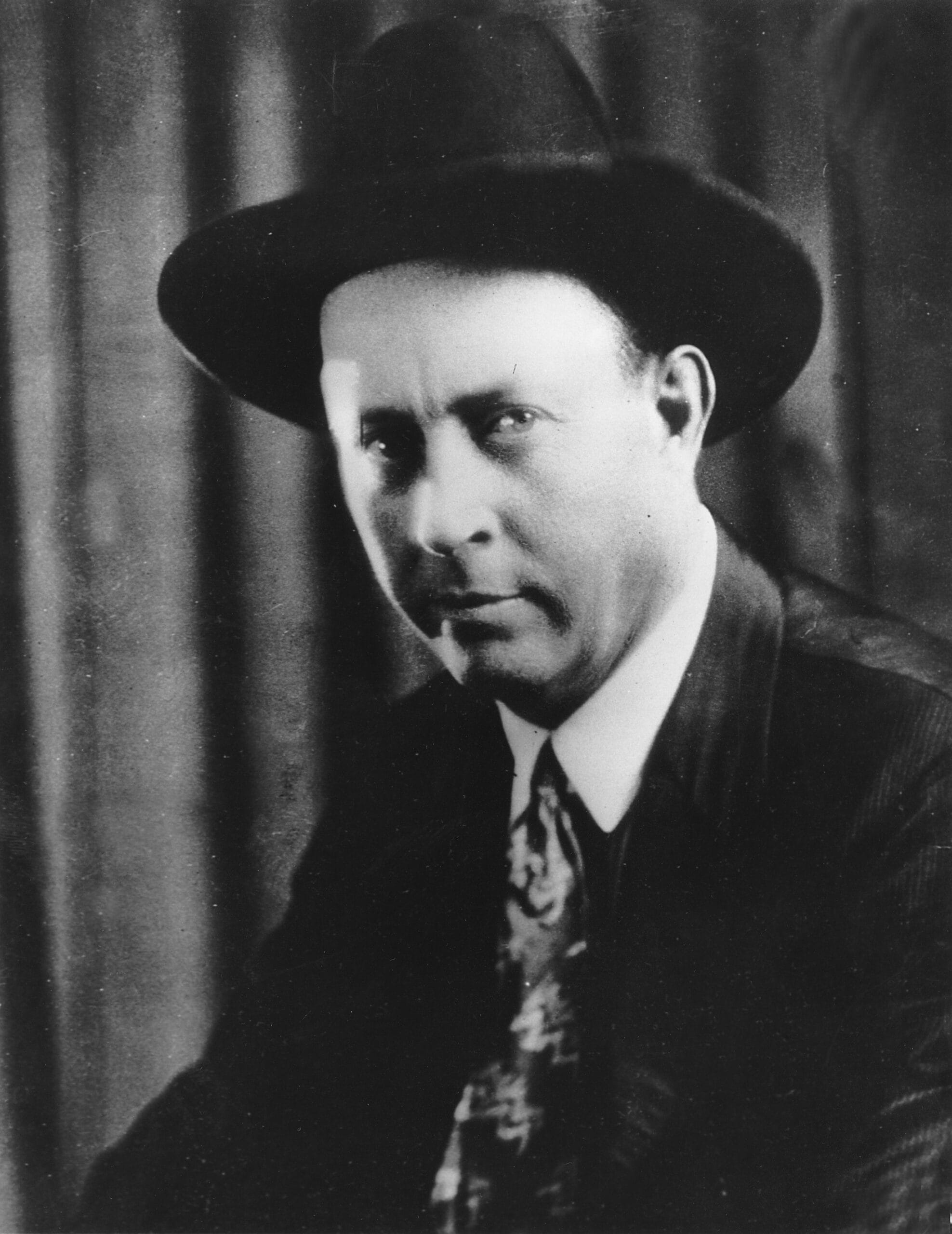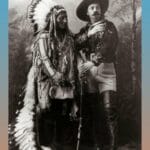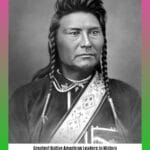Dive into the fascinating life of Frank Hamer, a legendary Texas Ranger who played a pivotal role in bringing down the famed outlaws Bonnie and Clyde. This enigmatic figure’s career was a wild ride filled with shootouts, relentless pursuits, and confrontations with corruption. Join us as we uncover the complexities of Hamer’s life, his exceptional abilities as a lawman, the challenges he navigated, and the indelible mark he left on the history of justice in the American Southwest.
The Making of a Texas Legend
Frank Hamer, a name synonymous with the Texas Rangers, was born in 1884. Embarking on his lawman journey at the age of 22, he entered a tumultuous Texas, rife with lawlessness and those seeking to live outside the reach of justice. Hamer, however, proved to be a force to be reckoned with.
Hamer’s reputation preceded him, especially along the Texas-Mexico border where he relentlessly pursued revolutionaries and outlaws. His ability to solve cases, most notably the infamous Santa Claus Bank Robbery, solidified his image as a man who delivered justice.
However, Hamer’s pursuit of justice wasn’t confined to outlaws. When the Ku Klux Klan emerged in Texas, he bravely confronted them, putting his own safety on the line to combat racial violence. This act, while courageous, earned him both admiration and animosity from various factions.
The Bonnie and Clyde Pursuit
The year 1934 saw Bonnie and Clyde become national figures, their crime spree capturing headlines across the country. Tasked with ending their reign of terror, Hamer meticulously planned an operation, assembling a posse of skilled lawmen. The final confrontation ended Bonnie and Clyde’s run in a hail of bullets, forever etching Hamer’s name in law enforcement history. However, the event also ignited debates surrounding the methods employed and whether they were justified.
Even after retiring from the Texas Rangers, Hamer continued his law enforcement career as a private investigator, lending his expertise to those in need. His involvement in breaking up labor strikes remains a controversial aspect of his life.
Frank Hamer’s life was anything but ordinary. Though often depicted as an unyielding lawman, the reality is likely more nuanced. To truly understand Hamer, one must look beyond the Bonnie and Clyde case and grapple with the methods he employed. It’s in these ethical gray areas that we catch a glimpse into the heart of this legendary Texas Ranger. Hamer wasn’t merely a figure in a history book; he was a man navigating a complex era, facing complex problems. His legacy continues to spark conversations about justice, morality, and what it means to wear the badge.
Unraveling the Myths: How Many Times Was Frank Hamer Shot?
Frank Hamer’s reputation as a Texas Ranger is legendary, but just how many bullets did he actually face during his career? While the exact number remains shrouded in mystery, exploring the stories and evidence reveals a tale as captivating as the man himself.
Sources confirm at least TWO instances where Hamer sustained gunshot wounds requiring medical attention. However, given the nature of his work and the era, it’s probable that he encountered numerous other close calls that went undocumented.
The most persistent rumor claims Hamer survived an astonishing 17 gunshot wounds! While likely an exaggeration, this speaks volumes about the legend surrounding him. Even his survival of a fractured skull, sustained during the capture of notorious criminal Red Lopez, showcases a resilience that fueled his image.
Adding to the intrigue, Hamer himself rarely discussed his injuries, allowing stories to circulate. This silence, whether intentional or not, further solidified his mystique. Even his son, Frank Hamer Jr., felt compelled to address the growing legends, debunking the claim that his father had killed over 40 people, suggesting a significantly lower figure.
The lack of concrete information about Hamer’s injuries doesn’t diminish his legacy; it enhances it. It speaks to a bygone era where toughness was expected and vulnerability rarely acknowledged. The unanswered questions only add to the allure of this steadfast lawman who walked away from dangers that would have felled lesser men.
Interested in learning more about the George Wallace shooting in 1972? Click on the link above to find out more. You may be interested to read an article about Elizabeth Stride too.
A Race Against Time: How Long Did It Take Frank Hamer to Catch Bonnie and Clyde?
Bonnie and Clyde, the notorious outlaw duo who terrorized America during the Great Depression, managed to evade law enforcement for over two years. Their luck, however, was destined to run out. The man tasked with bringing their reign of terror to an end was none other than Frank Hamer, a legendary Texas Ranger renowned for his unwavering determination.
What might surprise many is that Hamer’s active pursuit of Bonnie and Clyde lasted a mere two months. Unlike other lawmen who’d chased shadows, Hamer approached the case with calculated precision. He meticulously studied their every move, analyzing past crimes like a detective piecing together a puzzle. This strategic approach allowed him to anticipate the duo’s actions and predict their next hideouts.
However, Hamer’s true advantage lay in his vast network of informants, cultivated throughout his years as a Ranger. These individuals, from all walks of life, provided him with invaluable tips and whispers about Bonnie and Clyde’s whereabouts. Recognizing the power of collaboration, Hamer also worked closely with other law enforcement agencies, ensuring a coordinated effort to apprehend the elusive criminals.
Hamer’s strategic planning culminated in a carefully orchestrated ambush on a dusty road near Sailes, Louisiana, on May 23, 1934. Armed and ready, Hamer and his posse sprang their trap, ending the notorious run of Bonnie and Clyde in a hail of bullets.
Despite achieving what others couldn’t, Hamer remained grounded. He viewed himself as simply doing his job, upholding the law, and serving justice. This dedication is exemplified by his refusal to accept a hefty sum from a publisher for a tell-all book about the Bonnie and Clyde case, demonstrating that his motivations were rooted in duty, not fame or fortune.
Frank Hamer’s pursuit and takedown of Bonnie and Clyde stand as a testament to his remarkable abilities as a lawman. A master strategist, a charismatic leader, and a relentless force of justice, his legacy continues to inspire, proving that extraordinary individuals can achieve extraordinary things.
Justice and Compensation: How Much Did Frank Hamer Get Paid for Bonnie and Clyde?
The tale of Frank Hamer and his takedown of Bonnie and Clyde is etched in American history. But what about the financial side of this legendary manhunt? What price did Texas place on ending the notorious duo’s reign of terror?
At the time, Hamer received a monthly salary of $180 from the Texas Prison System. This was a significant pay cut from his previous earnings as a full-fledged Ranger, suggesting a financial incentive beyond his base salary. It’s widely believed that the Texas Prison System offered this reduced rate with the understanding that Hamer would also receive a share of any valuables recovered from Bonnie and Clyde. This included their arsenal of weapons, their getaway car, and even their jewelry. Some speculate that the total value of these possessions could have reached as high as $10,000, a king’s ransom during the Depression era.
While the exact details of any additional compensation remain unclear, the promise of keeping Bonnie and Clyde’s possessions adds another layer to the story. It raises questions about the ethical implications of such arrangements and the practices of bounty hunting during that period. Was this standard practice? Did it create a conflict of interest for lawmen?
Despite the allure of financial gain, Hamer’s actions throughout his career, particularly his refusal to exploit the Bonnie and Clyde case for personal profit, suggest a man driven by principles. He dedicated his life to upholding the law, even when it came at a personal cost. His story reminds us that some things are more valuable than money, and true dedication to justice often comes with sacrifices.
- Crypto Quotes’ Red Flags: Avoid Costly Mistakes - June 30, 2025
- Unlock Inspirational Crypto Quotes: Future Predictions - June 30, 2025
- Famous Bitcoin Quotes: A Deep Dive into Crypto’s History - June 30, 2025
















